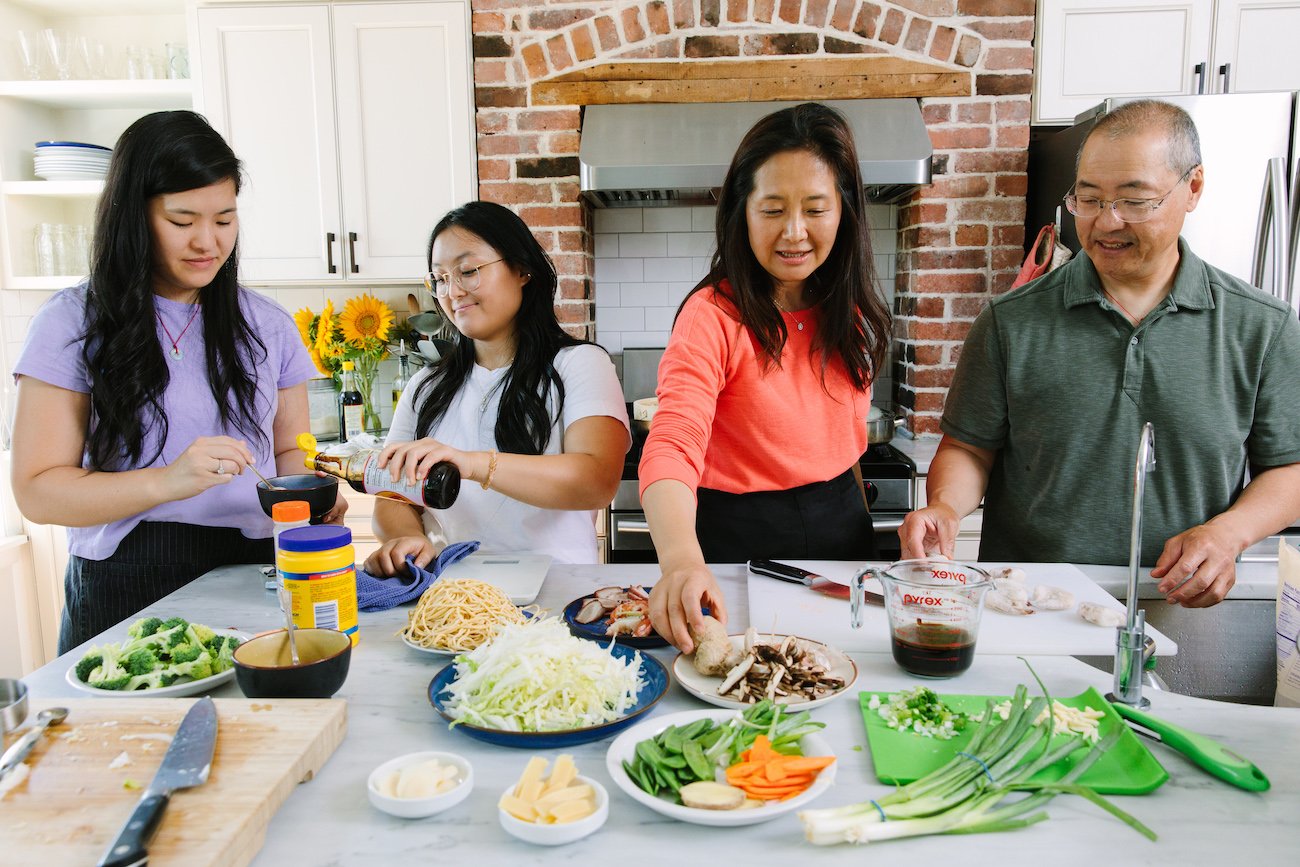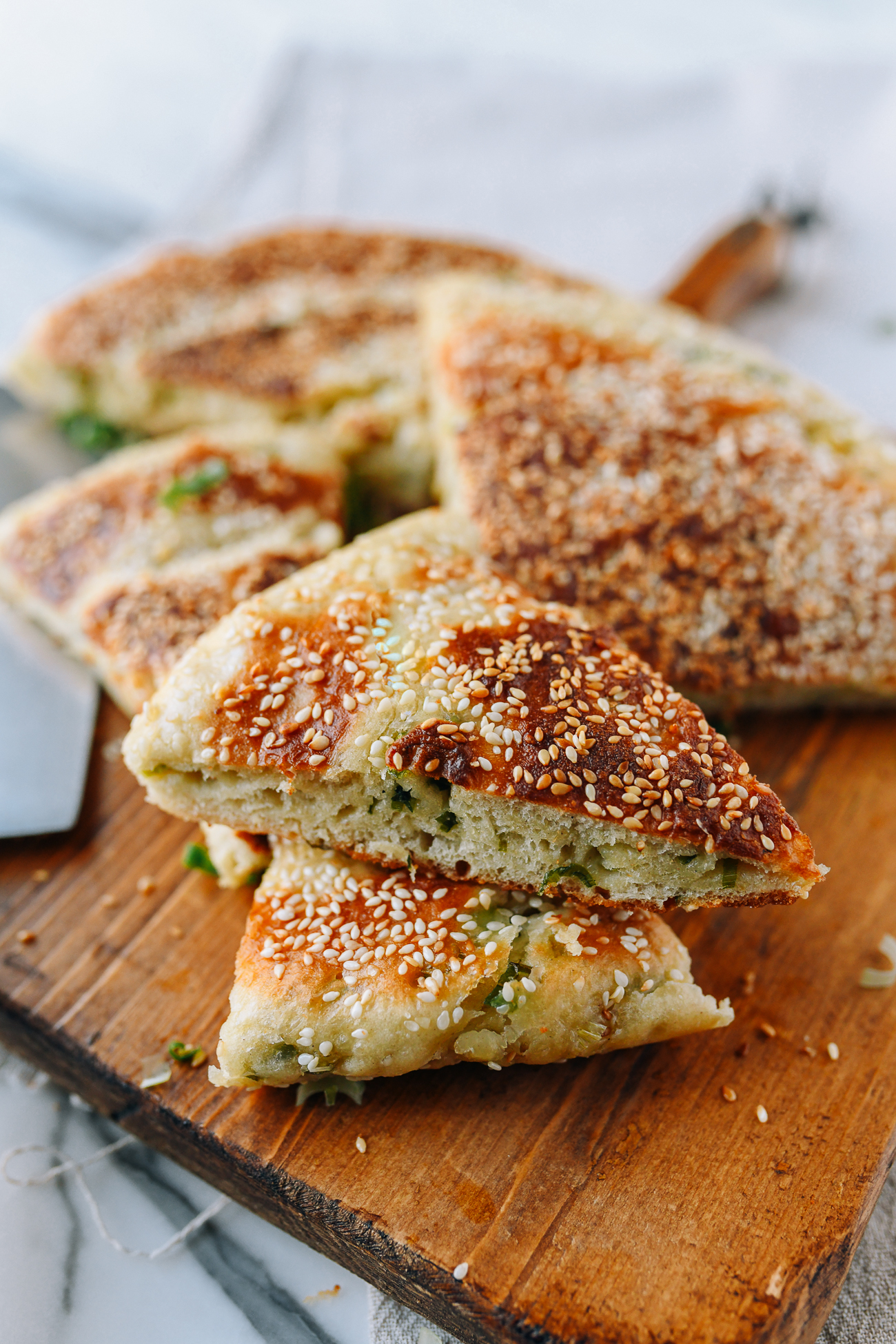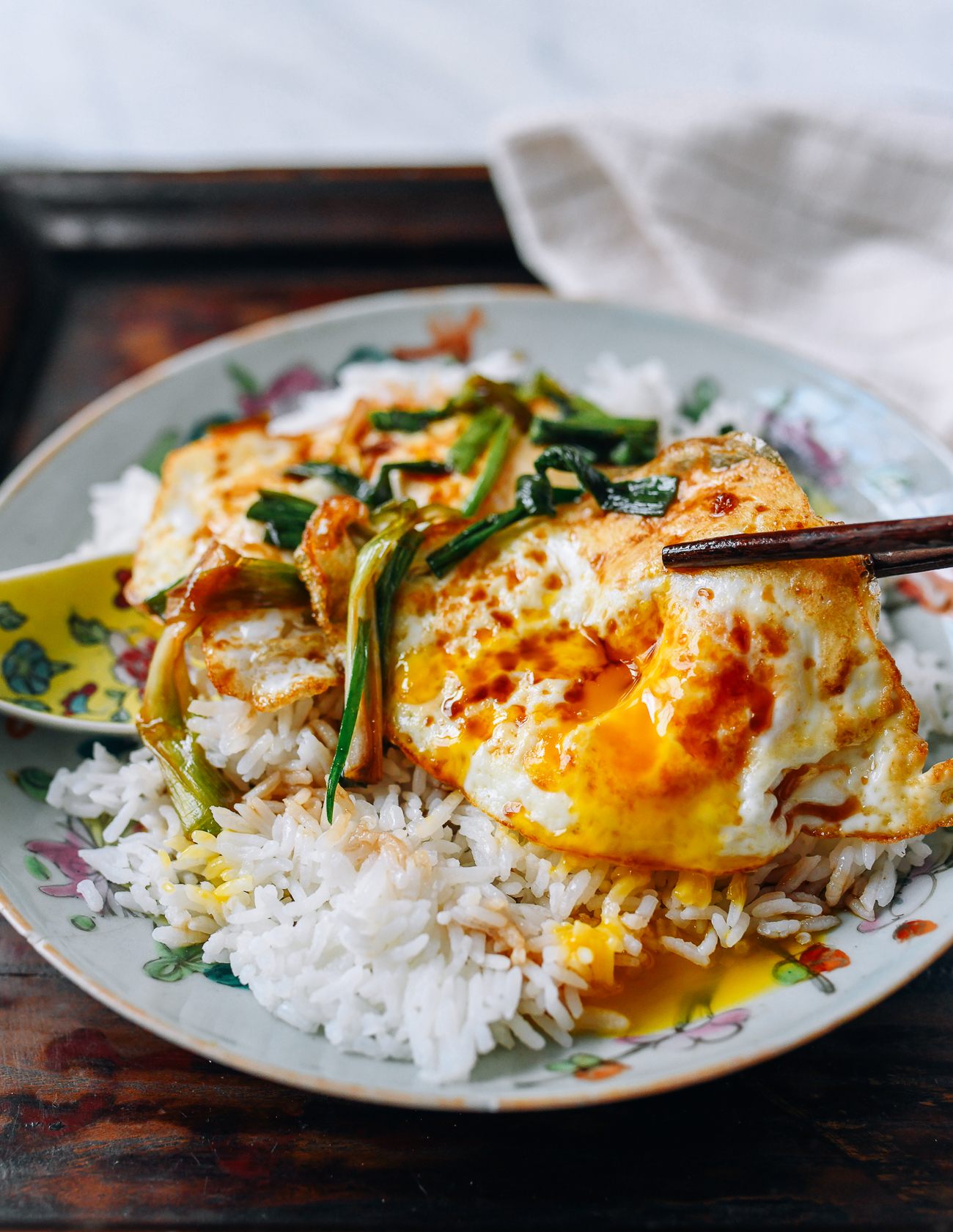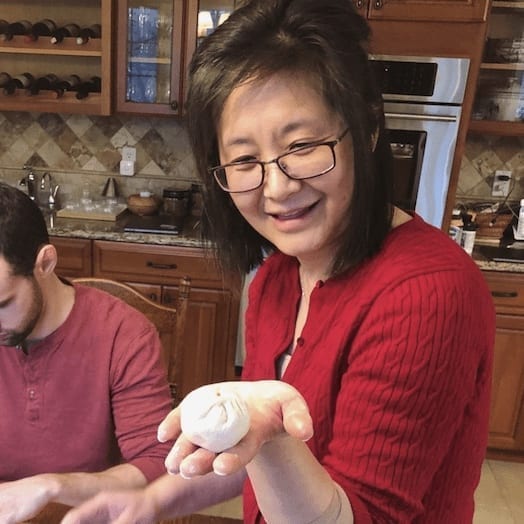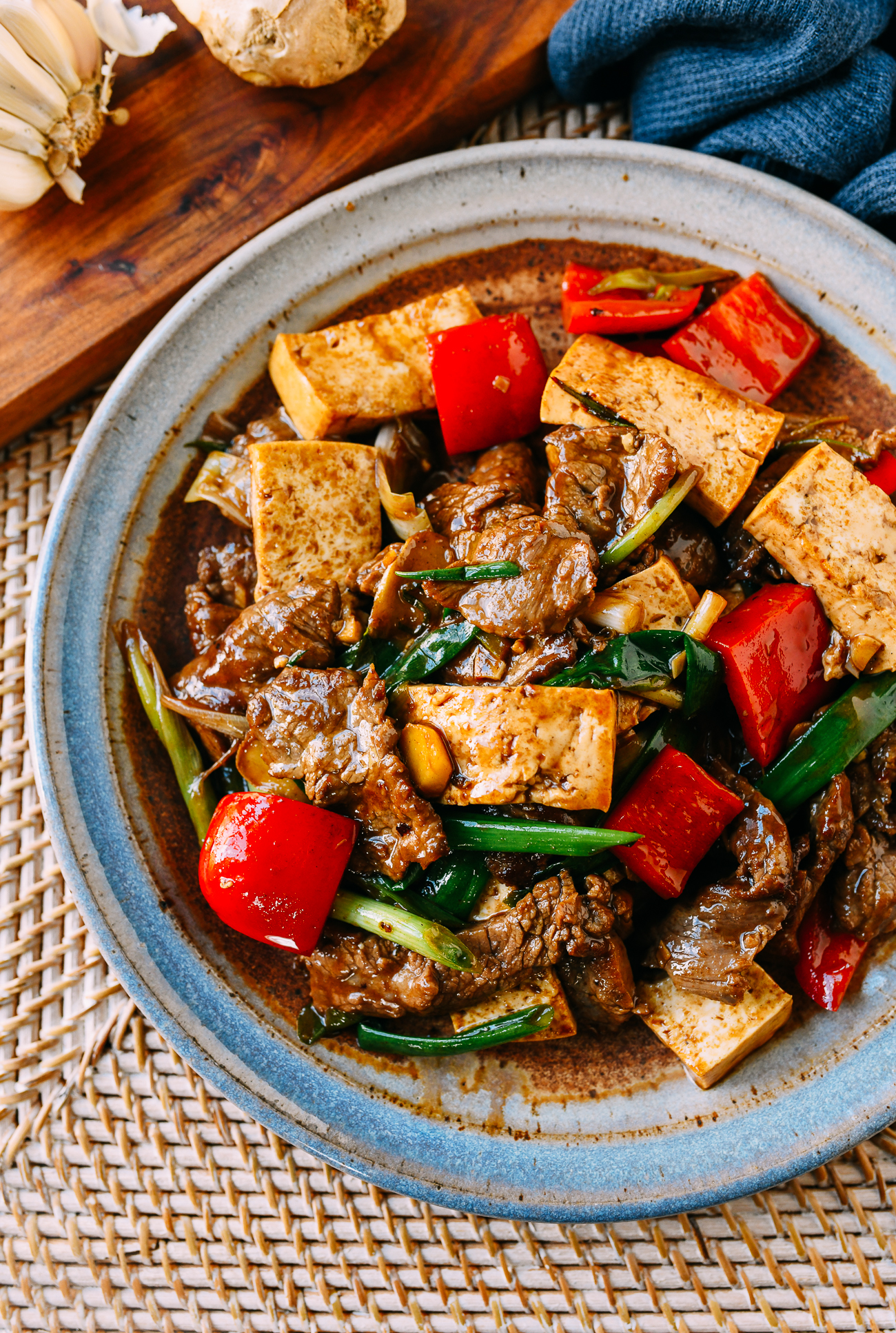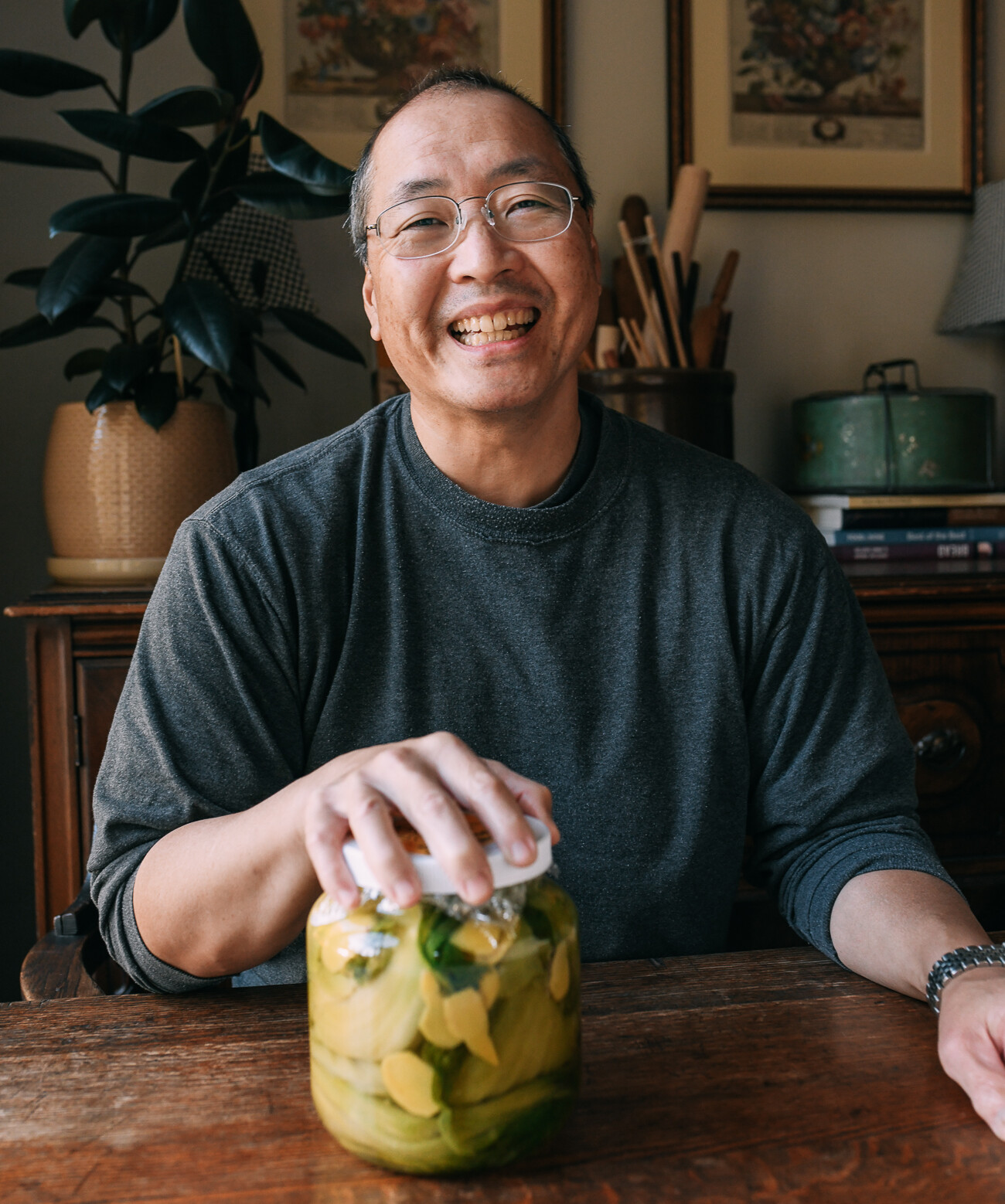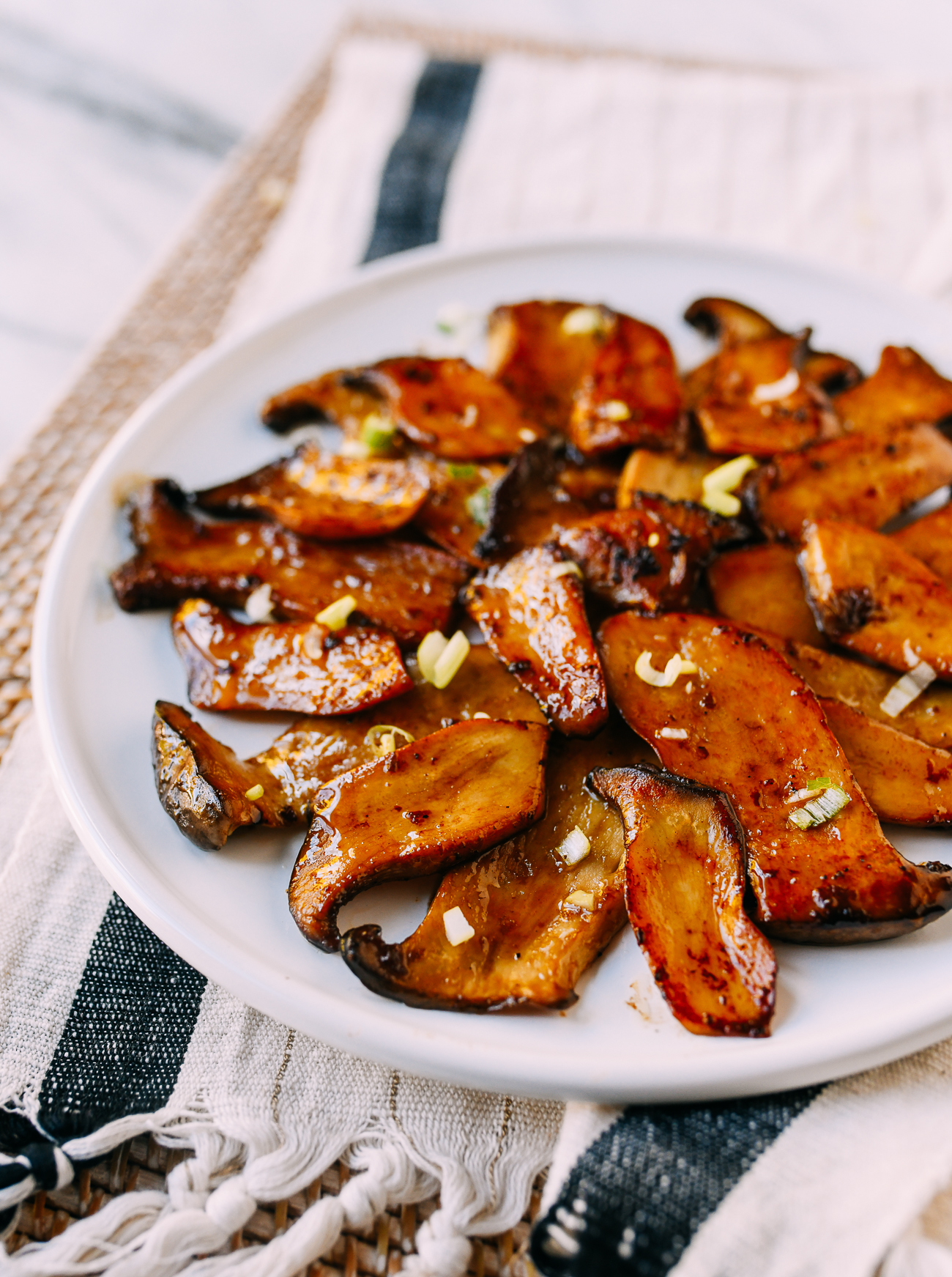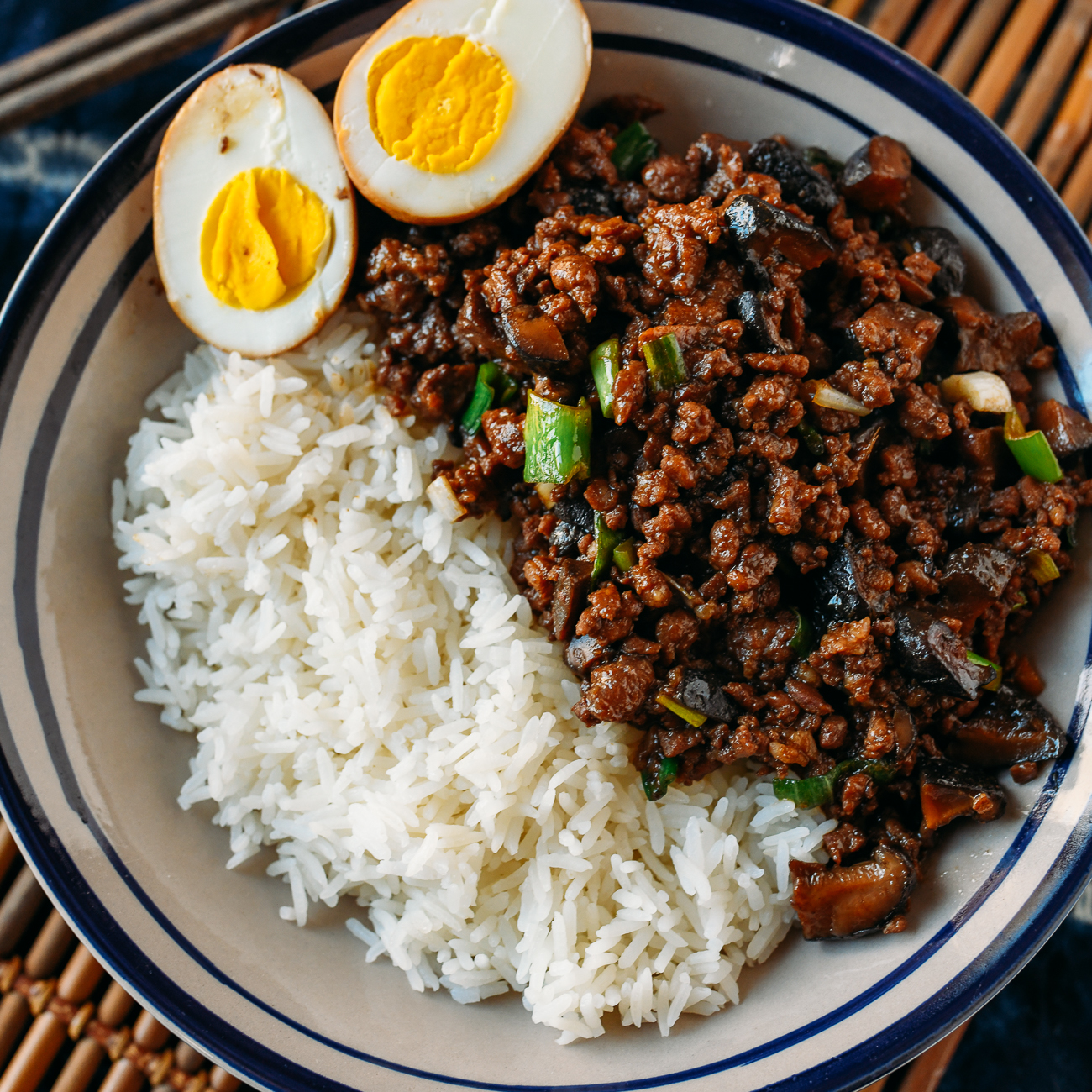
Jasmine rice is our go-to white rice for serving with Chinese dishes and making fried rice. In this post, we’ll answer all your questions about rice measuring, the “finger trick” every Asian kid knows, and the rice cooker we all own. And of course, we’ll teach you how to cook jasmine rice perfectly every time, in both a rice cooker and on the stove.
What Is Jasmine Rice?
Jasmine rice is a fragrant, long-grain white rice (though you can find brown jasmine rice too), grown primarily in Thailand. It gets its name from its subtle aromatic scent.
When cooked properly, it is perfectly tender, with grains that are distinct but still slightly sticky. In other words, they tend to stick together more than regular long-grain rice (perfect for picking up with chopsticks), but less than sushi rice (which is less ideal for eating with stir-fries).
The rice has a slightly sweet flavor and releases a pleasant popcorn-like aroma when cooking. It is our preferred white rice to accompany our Chinese dishes, and for making fried rice.
Making fried rice?
We often get questions about the ideal rice for making fried rice. The answer is jasmine rice! It has the perfect starch level and texture. You can use leftover cold rice, or you can make fresh rice and spread it out on a sheet pan to release some of the moisture and steam and allow the rice to cool for an hour or so. Just make sure to heat your wok properly before adding oil and other ingredients, and your rice should not stick!

A Staple That We’ve Cooked Everywhere
We’ve been making jasmine rice all our lives—not just at home, but in dorm rooms, apartment kitchens, in Airbnbs and rental houses with whatever cookware we could find, in my parents’ RV, and on camping stoves.
We’ve even cooked it over an open fire while camping. (Rice and beans or rice with a nice curry or stew are some of our favorite camping meals. The keys are: nice white-hot coals, keeping the pot the proper distance from the heat, soaking the rice, and a splash of oil in the pot to prevent sticking!)
Long story short, we know how to cook jasmine rice pretty perfectly in all these scenarios, so we have all the experience and details to ensure that you can cook it perfectly too!
In a Rice Cooker or On the Stove
If you’re making rice often—say a couple times per week—we recommend getting a rice cooker. It certainly makes the process easier and faster! We will go over our steps for cooking rice in a rice cooker—along with the famed “finger trick” that every Asian kid learns to measure the water level in the cooker.
But for those of you who only occasionally enjoy a bowl of jasmine rice, we have stovetop instructions that will get you perfect results as well.
The main difference between the two methods for how to cook jasmine rice is this: If cooking jasmine rice on the stove, you must pre-soak it before cooking.
Many sources on the Internet and in cookbooks say that you need a 2:1 ratio of water to rice. The trouble is, it takes a while for the rice to absorb all that water, and staying on the heat longer means that you often get rice sticking to the bottom of the pot—or worse, burning on the bottom!
(Ever had to scrape burnt rice off the bottom of a pot? No matter how long you leave it to soak in the sink, it’s always a pain.)
Soaking the rice gives it a head start on absorbing that water. This allows it to cook much quicker—not enough time to start burning. Once soaked, a 1:1 ratio of soaked rice to water is perfect.
VIDEO: Watch Me Make Rice & Answer ALL YOUR rice-related questions!
The Rice Cooker That Every Woks of Life Family Member Uses
I’m going to talk a bit more about rice cookers below, but if you’re a stovetop person, just skip ahead!
Being a Chinese family, we consist of three rice cooker households. My parents, my sister, and I each have a rice cooker in our homes—and it happens to be the same one!
If you’ve wondered what rice cooker The Woks of Life family uses, here’s the secret revealed: It’s the Japanese Tiger JNP series rice cooker. (Note: if you make a purchase at this Amazon link, The Woks of Life will make a small commission, though Tiger did not sponsor this post.)
It doesn’t have many “modes” or settings. Just a start button. Press start, and the rice cooks. When it clicks off, the rice cooker is in “keep warm” mode, allowing it to keep your rice hot for hours.
Not only do we love its simplicity, it can cook rice FAST. A few cups of rice cook in 11-12 minutes by our count. So even if you’re halfway through cooking dinner and realize you forgot to make rice, you’ll never have to wait long for it to be ready.


The cooker comes in different sizes—Kaitlin still has her itty-bitty 4-cup college dorm room sized cooker, which served us well when we lived together and is still going strong. My parents have the giant 10-cup cooker, which works great for large family gatherings.
When I got married, I also bought the honking 10-cup cooker, imagining some future army of children/my own parties to feed. Thus far, however, it just takes up too much space in my cabinet and hasn’t yet reached its potential. Perhaps I would’ve been better served by the 8-cup size!
When considering rice cooker size, remember that with a rice cooker that cooks as quickly as the Tiger JNP, you can always make another batch of rice if needed. If you have a rice cooker that takes 30-40 minutes to cook a batch of rice, then a larger size might be your best bet.
Rice Cooker Cups vs. US Cups
We often call for “cups” of uncooked rice in our recipes, and we inevitably get the question: Do you mean a regular measuring cup? Or the measuring cup that came with my rice cooker?
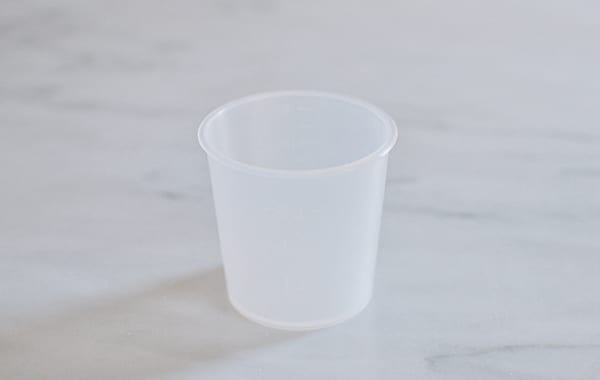
Great question! In all of our recipes that use US customary measurements (you can also toggle “metric” in the recipe card for weight measures), we mean US cups, unless otherwise stated.
In this recipe, we will call for rice cooker cups for the rice cooker method, and US cups for the stovetop method.
Did You Know?
A standard rice cooker cup is actually very close to US ¾ cup. So if you have a rice cooker, but misplaced that little plastic cup that came with it, you can always pull out a ¾ measuring cup to use instead! This rice industry standard measure is 180 ml, which is considered to be enough raw rice for one person’s meal. The measure is called a gō or gou (合).
How to Cook Jasmine Rice: Instructions
Rice Cooker Method:
Add 3 rice cooker cups (1 rice cooker cup = US ¾ cup) of jasmine rice to your rice cooker pot. Add enough water to cover the rice, and agitate the grains with your hands. This washes the rice and rinses away some of the surface starch to improve the texture of your cooked rice.
Pour off most of the water (leaving some behind is fine).

And fill with water to the ‘3’ line. Place the pot in the rice cooker, cover, and press Start.

Follow the same method using however many cups of rice you like. However, we’ve found that cooking a very large amount (say, 8 cups) can be inconsistent in the rice cooker. Something to keep in mind, but you may want to cook in a couple batches if making a larger amount.

The “Finger Trick”
If you’d rather take a more devil-may-care approach to measuring your rice and water, you can measure the water with the “finger” trick method, common in many Asian households. This method is great, because it works regardless of the amount of rice you’re cooking.
Once you’ve rinsed your rice and poured off the water, add a bit more water to just cover the rice. Shake the rice cooker pot back and forth so the rice is evenly distributed. Rest the tip of your index finger on top of the rice (don’t let your finger sink into it), and add water until the water level reaches your first knuckle. That’s it!
Stovetop Method:
Measure however much jasmine rice you want to cook, and note the volume. Add the rice to a thick bottomed, deep pot (it will triple in volume once cooked, so make sure the pot is the correct size). Cover the rice with 2 inches of water, and let it soak for 15-20 minutes.

Pour off most of the water (leaving a little behind is okay). Then measure the same volume of water as the initial amount of rice you measured, and add it to the pot. (If you started with 1 cup of rice, add 1 cup of water to the soaked, drained rice in the pot.)
Cover, and place the pot over medium-high heat.
When the water comes to a boil, immediately turn down the heat to low. Cook the rice, covered, for about 15 minutes, or until it has absorbed all the water.
FAQs
Rice about triples in volume when cooked, so 1 US cup of raw rice will yield about 3 US cups of cooked rice. Budget about 1 cup of cooked rice per person if you’re serving it as a side.
Yes, you can use these same methods using brown jasmine rice. However, we suggest allowing the rice to soak for about 1½ hours (or even longer) before cooking.
We were taught to always wash the rice. But honestly, if you’re trying to conserve water, and you’re using a high quality jasmine rice, it’s not 100% necessary. It’s up to you!
If cooking rice on the stove, without the rice cooker water level guidelines, we suggest a 1:1 ratio of jasmine rice to water AFTER soaking the rice for 15-20 minutes.
There is no need to add oil or butter to cook jasmine rice. In Asian cuisine, rice is usually cooked with just plain water. (Unless making something like chicken flavored rice or coconut rice.)
Rather than using water, you can use chicken or vegetable stock to cook it, or make rice with coconut milk. You can also add salt, oil, or herbs like cilantro or scallions to the rice. Check out our recipes for Chicken Flavored Rice, Coconut Rice, and Scallion Rice for more guidance!
Yes! Check out our post on how to steam rice for instructions.


Looking for more authentic recipes? Subscribe to our email list and be sure to follow us on Pinterest, Facebook, Instagram, and Youtube!
Recipe
How to Cook Jasmine Rice
Ingredients
- jasmine rice
- water
Instructions
Rice Cooker Method:
- Add 3 rice cooker cups (1 rice cooker cup = US ¾ cup) of jasmine rice to your rice cooker pot. Add enough water to cover the rice, and agitate the grains with your hands. This washes the rice and rinses away some of the surface starch to improve the texture of your cooked rice.
- Pour off most of the water (leaving some behind is fine), and fill with water to the ‘3’ line. Place the pot in the rice cooker, cover, and press Start.
- Follow the same method using however many cups of rice you like. However, we have found that cooking a very large amount of rice (say, 8 cups) can be inconsistent in the rice cooker. Something to keep in mind, but you may want to cook in a couple batches if making a larger amount.
Stovetop Method:
- Measure however much jasmine rice you want to cook, and note the volume. Add the rice to a thick bottomed, deep pot (it will triple in volume once cooked, so make sure the pot is the correct size). Cover the rice with 2 inches of water, and let it soak for 15-20 minutes.
- Pour off most of the water (leaving a little behind is okay). Then measure the same volume of water as rice, and add it to the pot. Cover, and place the pot over medium-high heat.
- When the water comes to a boil, immediately turn down the heat to low, and cook the rice, covered, for about 15 minutes, or until it has absorbed all the water.






